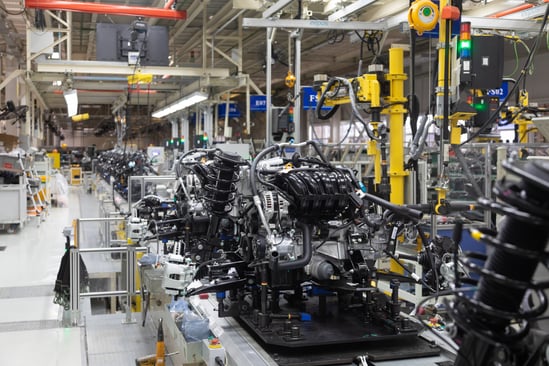Uneven recovery- With businesses looking for ways to enhance and improve their revenues as we transition through Covid, 2021 is positioned to be the start of the post-covid recovery. The speed of this recovery across the industries will be uneven, with growth in some sectors rebounding quickly, while for few others it is likely to take years before returning to pre-pandemic levels. While on the path to recovery, businesses need to rebuild their position in a new reality and new market conditions.
Strategies for growth- Smart businesses need to adopt prudent strategies to stay afloat and achieve a return to pre-covid revenues and profitability. Implementing growth strategies to reach these objectives will need to consider the continuous uncertainty of further pandemic impacts. This highlights the importance of effective working capital and supply chain management to provide a buffer through this period. Corporates are putting these buffers in place, and it is important that these contingencies are enabled through the entire supply chain.
The working capital landscape- The pandemic posed unique challenges in procuring working capital, resulting in a wider gap in cash levels between large and small companies. Large companies tend to have more efficient cash management practices and better access to external capital. During the pandemic, the propensity for lenders to provide capital to smaller companies reduced, resulting in a significant cash shortfall as these companies try to navigate out of covid and their efforts to return to a growth trajectory.
Maintaining product availability- Suppliers work to assure the continuity of production and services, on time, at the right price, and of the required quality. There is also a co-dependency, with suppliers of distributors, who act as the bridge with their large corporate buyers, or at times further upstream on other companies for their base raw materials. All counterparties are equally dependent on each other, which makes the so-called supply chain ecosystem balanced. The other side shows an array of scattered vendors - few big, but mostly small setups. Balancing this is a fine art which can easily be imbalanced by strained cash flows impacting relationships.

Cashflow issues- Suppliers, distributors & vendors, need funds to ensure they have inventory on hand to meet customer demand. Given the cash drain of the pandemic, it is not surprising that most are struggling with regular and significant cashflow issues. This delicate equilibrium is further complicated by customer demand, which is much more erratic as we emerge from covid. In addition, they are facing lending issues as traditional working capital sources are reluctant to lend to companies that have used government cash support through the covid lockdowns, citing concerns on their viability.
Most of them, as in the situation above, have similar tales of trouble to tell. With smaller revenue’s, it is likely they do not have the right security and resources to procure working capital loans. Many have limited business know-how as well to secure alternative sources of capital on their own.
Corporate Buyer Support- Being reliant on these suppliers for inventory, many corporate buyers are taking it upon themselves to respond to the situation. This is being done selectively by shortening payment terms, however this risks the corporates own working capital and is not ideal.

Suppliers are also reluctant to ask for corporate support due to concerns that the corporate may delist them. The impact is that the real reason for stock availability issues are hidden from the corporate buyer, ultimately impacting the corporate buyers’ revenues
Tesla approach- Innovative companies such as Tesla, are using advanced payments to suppliers as a competitive advantage, by becoming the preferred customer of chip makers. This enables that whole supply chain to kickstart their operations.
Digitisation as a solution- For businesses to tackle these issues like Tesla, innovation in funding the supply chain can cause a breakthrough driving stability within the supply chain and growth. However, not every organisation has the deep pool of working capital which Tesla can access. So how can a similar effect be achieved by other corporates for their supply chains?

1. Working capital programmes for vendors and their suppliers – Without impacting the corporate buyers balance sheet, operations or working capital, this provides suppliers with seamless access to cash, without jeopardising their relationship with the corporate. This can also be extended to provide access working capital to the suppliers of the suppliers thus creating value and stability up the supply chain. This is a classic opportunity to build assurance for the corporate in the “just- in-time” supply chain on which we all rely these days.
2. Pre-shipment supply chain offering- This enables suppliers to have access to working capital at the point of getting orders from the buyers, enabling them to swiftly kickstart their operations along with prioritizing orders from the corporates offering such financial support.
3. Inventory based financing- For suppliers sitting on piles of inventory, with supplies getting delayed due to staggered demands from the buyer, getting paid on the stockpiles for dedicated number of days, provides a lot of respite to have the liquidity churning through their systems.
Crossflow is the 8th fastest growing company in Europe, providing digitised working capital services to corporates and their extended supply chains. The service is deployed within weeks, requiring minimal IT or operational effort from clients, and suppliers register online in minutes. With a single global legal framework, Crossflow can be deployed globally to suppliers, and they can access working capital anytime in a matter of minutes.
Feel free to connect and speak to us how innovated approach to working capital management can help your business to recover faster and more effective.

Magda Rozczka is CEO at Crossflow. After completing her postgraduate MBA, Magda led product development within the insurance sector at ING and Zurich. Magda represents Crossflow on the Bank of England decision maker panel, which influences UK interest rates, and has represented Crossflow as part of HM Treasury’s Women in Finance initiative.





